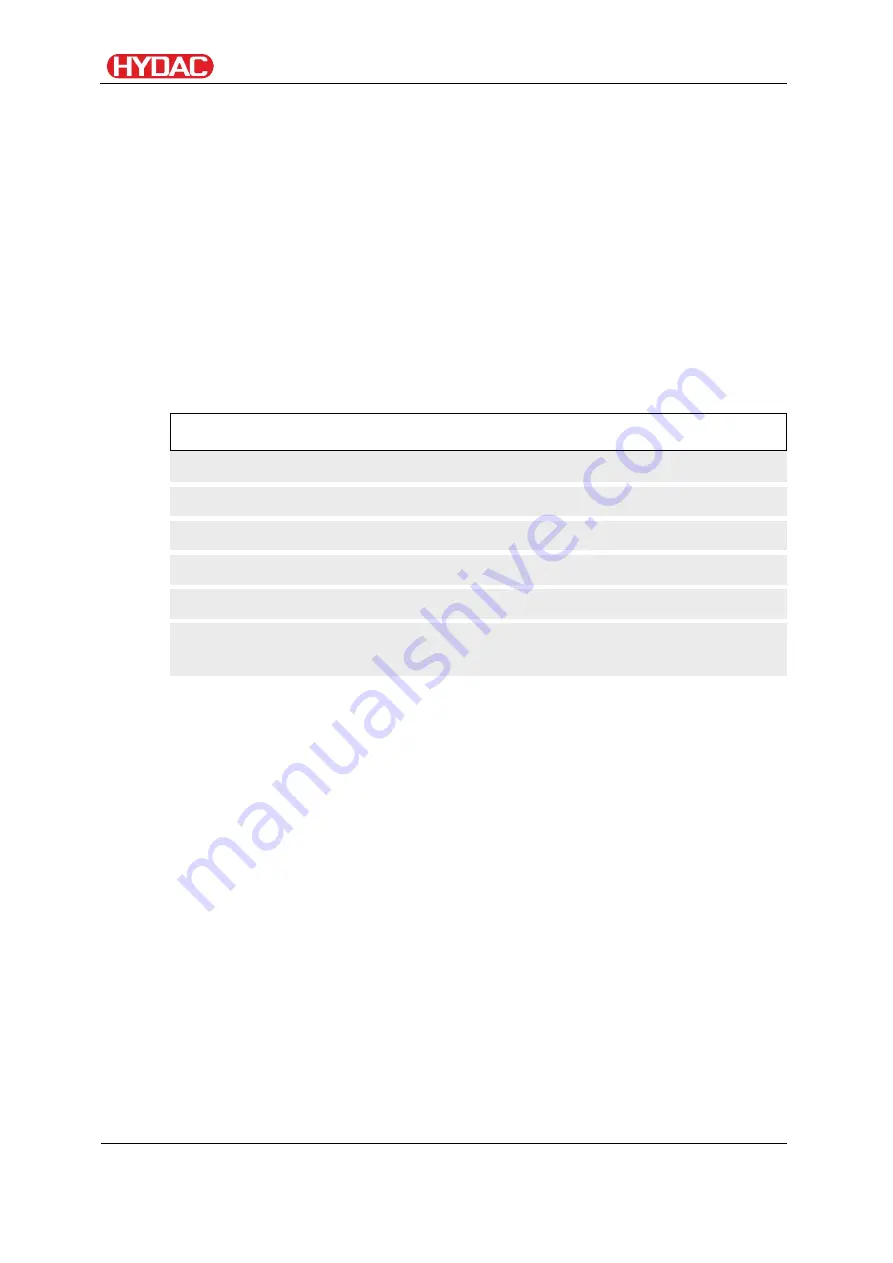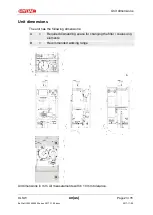
Unit setup/connection
Notes on pipes/hosing
Make sure that no vibrations or stress/loading from other machinery and
equipment are carried over to filtration unit. Make sure that no vibrations or
stress/loading from other machinery and equipment are carried over to
filtration unit. Use hoses or expansion joints if necessary.
The pressure loss in a hydraulic line depends upon:
•
Flow rate
•
kinematic viscosity
•
Pipe dimensions
•
Density of the fluid
The pressure loss can be estimated for fluids as follows:
Δp ≈ 6.8 * L / d
4
* Q * V * D
Δ
p
= Pressure differential in [bar]
L
= Pipe length [m]
d
= Internal pipe diameter [mm]
Q
= Flow rate [l/min]
V
= Kinematic viscosity [mm²/s]
D
= Density [kg/dm³]
Mineral oil-based hydraulic fluid has a
density of ≈
0.9 kg/dm³.
This applies for straight pipelines. Additional threaded connections and pipe
bends increase the pressure differential.
Keep the height difference between the unit and the fluid level in the tank as
small as possible.
Constrictions in the connections and lines should be avoided. This could
compromise suction output and cause cavitation.
Take note that the nominal size of the connected hoses/piping must be at
least as large as the inlet port sizes.
If the unit is connected to hard piping, precautions must be taken to ensure
that no stresses or vibrations are transmitted to the pump/filter housing. If
necessary, use hoses or expansion joints.
OLSW
en(us)
Page 25 / 76
BeWa OLSW 4268435 en-us 2017-11-09.docx
2017-11-09
Summary of Contents for OLSW
Page 63: ...Finding spare parts OLSW en us Page 63 76 BeWa OLSW 4268435 en us 2017 11 09 docx 2017 11 09 ...
Page 74: ......
Page 75: ......
















































